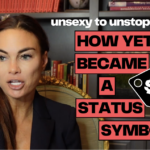
Stop being a slave to the stats, and focus on impact.
If you’ve engaged with a company as an influencer, or you’ve sought out influencers to work on your company’s behalf, you’ve probably played the numbers game.
How many followers? How many views? How many comments? How many hits? How many of anything can we measure to gauge your value? And the questions flow both ways: brands want to know they’ve got a hot property, and influencers don’t want to work with some Mickey Mouse brand.
(Unless it’s actually Mickey, of course.)
There’s nothing inherently wrong with numbers—or with the metrics of popularity, for that matter. The problems begin when we start equating popularity with influence.
Of course, the two concepts can co-exist, and can even have a mutually beneficial effect on one another, given the right circumstances. But can the terms be used interchangeably? Can they be measured the same way? Does possessing one mean you possess the other, too? Can they have an equally valuable impact on your business goals?
No, no, no, and no way.
Why did my shortcut lead to a dead end?
Marketers love to confuse popularity and influence because popularity is ostensibly easily measured.
If someone has thousands of YouTube subscribers or Instagram followers or re-tweets every time they post, marketers get excited. When their acolytes see them using your super skin cream or fitness equipment or kitchen tool, your sales will go through the roof, right? Get that contract ready, and you’re off to the races.
Not so fast.
While you might get some sales via increased eyeballs, you’re ultimately mistaking reach for impact. Being known is not the same thing as being trusted, and having a following is not the same thing as building a community. The internet loves a trainwreck as much as a superstar… but they’re not about to take a trainwreck’s advice on what to eat, drink, wear, or do.
And the reality is, you might not know which you’ve got on your hands until you fall short of achieving your business goals.
Wait… did you actually set some business goals?
Why are you doing all of this, anyway?
When we know our goals and long-term strategy, we don’t waste time on shiny objects—but if we don’t set any goals, the shiny objects are far too alluring.
At the end of the day, every company is trying to do three things:
- Raise revenue
- Lower costs
- Increase customer satisfaction
Sure, there are a lot of other goals that businesses put into their plans, but the bottom line is, in order to be a business (versus a hobby), these three things are what matter most in the long run. If your work doesn’t map to one of these three goals, you are wasting time, money, and resources.
Speaking of goals, every good MBA has heard of the SMART model:
- Specific
- Measurable
- Attainable
- Relevant
- Time- bound
But for some reason, when it comes to influencers, we throw these standards out the window for notions that are entirely more vague in terms of impact and results:
- “Building awareness”
- “Fostering engagement”
- “Creating brand equity”
Not that there’s anything wrong with those notions at first glance, but they’re certainly not SMART. What actually constitutes awareness? Who are we really targeting? What do they need/want? What do we want them to do? What are we defining as ‘engagement’? How do we collect information so we can continue communicating? What is brand equity and how will we know we’ve created it? How are we going to measure if we are in fact achieving any of these things? What’s the follow-up plan?
If you don’t have the answers to any of those questions, you don’t have a goal.
How should I be thinking about influence, then?
If you want to use influence and influencer marketing as an effective tool for your business, you have to figure out first what influencer marketing isn’t. Or at least shouldn’t be.
It’s not a matter of finding the most famous (or infamous) person who will hold your product up in a photo. It’s not social media marketing. It’s not social media advertising. It’s not simply a one-off, pay-to-play, #spon, #ad, or celebrity endorsement.
The irony is our first step is choosing who to work with by the numbers… and then we get vague about our actual goals and results.
So let’s clear about what real influence is….
- Built on trust
- Creates an impact beyond simply being seen and heard
- Benefits from two-way communication vs. broadcasting
- Stems from actual relationships: between an influencer and an aligned organization, and between the influencer and their community
- Compels people to take-action in a meaningful way
- Aligns with the philosophy and values of both the endorser and their community
- Happens over time, it’s a long-term, mutually beneficial relationship, not a one-off transaction
When you think about influence as something bigger than a set of “impressive numbers”, then you’re on your way to creating impact.
So how do you measure influence, then?
It’s definitely measurable… but it also requires a bit of a paradigm shift. Focus on the 4R’s: recognition, reference, relevance, and resonance.
- Recognition: How easily recognizable or known is this influencer among others in their category? When you’re evaluating this, rather than focusing solely on the numbers, think about the exact customer(s) you want to connect with. A respected expert with a small but devoted community has an entirely different ability to drive action than your average celebrity.
- Reference: Who else is referencing their work and are they relevant? Are they being mentioned by other experts or figures in their field? Are they getting coverage for their expertise and achievements in publications that your target audience reads? If they’re on a list, who came up with the list, and does anyone care?
- Relevance: How is their expertise, content, or subject matter aligned with your brand? They may be ‘influential’ and known’ in a specific topic, but how many other unrelated topics do they cover? What topic do they discuss the most, and does it align with what you do and offer?
- Resonance: Do they get real reciprocal engagement among their audience? (i.e. specific comments, not just likes and surface-level general/automated comments). Are there signs of reciprocal arrangements/agreements? When they are featured at an event, what is the turnout? They speak at a conference, how are they received? What’s the turnout when they host a book signing?
Yes, it’s hard to put a pretty package around measuring influence, but using the above as a checklist of factors for which to reference should give you an insightful framework to open your lenses. And keep in mind, the most extraordinary things are not straight-forward, by wanting to tightly measure human behavior with strict quantitative metrics is often going to force you to focus on the wrong things.
Okay, so, level with me: is popularity really all that bad?
I remember putting together a year-end “Best of” lists of posts for a client audit, and thinking: Is most-read the same as most-loved? Or more simply: Is popular the same as best? Or to take it even further: If something is popular, can it also be good?
Listen, metrics can tell you what resonates with your audience. But it’s also worth remembering that performance is a retrospective metric, and noting what was popular stops short of whether or not that popularity mapped to your desired action or outcome.
Ultimately, it’s fine to look at the numbers as part of a broader look at your potential influencer—but if you stop in the shallow end, you’re not going to actually see the power of influence to help you achieve your business goals.
Dive deeper, and you’ll actually find what you’re looking for: Real Impact = Real Results!
Tell us your thoughts on the current state (and struggles) with this concept of Influencer Marketing below!
Please don’t hesitate to reach out and connect. It’s what I love to do. And I personally promise to do everything in our power to help you grow your own influence, both personally and professionally.
Amanda







